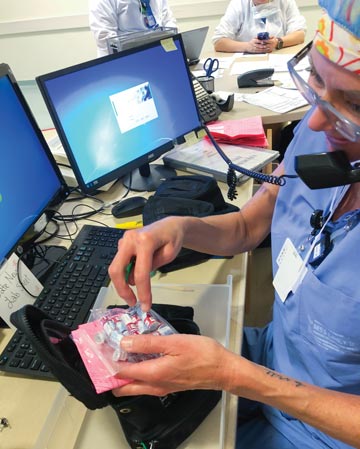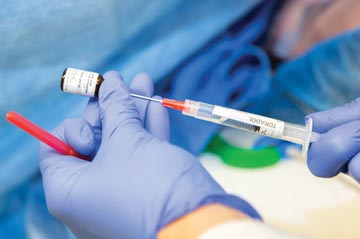In the early morning hours of Sept. 20, 2017, Hurricane Maria slammed into the southeast coast of Puerto Rico and tracked across the island with maximum sustained winds of 155 mph, leaving a trail of catastrophic destruction in its wake. The Category 4 cyclone knocked out the island’s power grid that ran the manufacturing plants of Baxter International, a major supplier of IV saline bags used by healthcare professionals across the United States to administer intravenous drugs. Baxter’s plants were offline for months, causing a severe shortage of 50 ml and 100 ml IV bags. Production volume of the bags is only now reaching pre-Maria levels.
The historic hurricane was an obvious event that slowed the flow of IV fluid to a trickle, but other causes of drug shortages are more subtle — and more persistent. Pharmaceutical companies hit with FDA warnings for failing to comply with quality medication production standards has led to massive recalls and forced some manufacturing plants to shutter, putting more strain on other drug producers that might not have the capacity or resources to fill the void. In September 2015, Pfizer acquired Hospira in a major merger involving companies that make a vast majority of injectable medications. Pfizer inherited Hospira’s manufacturing plants, which were wrought with quality control problems, and implemented a remediation plan 2 years ago. But production problems, unbelievably and frustratingly, persist.
In general, the generic injectables market remains fragile. There isn’t much of a profit incentive — generics are expensive to make and inexpensive to buy — for companies to produce the medications. Big Pharma is big businesses, first and foremost, and companies are opting to focus their manufacturing resources on more lucrative brand-name therapeutics.
Mother Nature and market forces make drug shortages predictability unpredictable — and extremely difficult to manage. But try telling that to frustrated anesthesiologists and surgeons who don’t give two shots of saline about the underlying causes that limit their access to needed medications. You can look for untapped resources (spoiler alert: none exist) to find the drugs they want or you can accept that managing drug shortages is the new normal and realize that doing it well demands a bit of clinical creativity, constant communication with your surgical team and plenty of hard work.
1. Monitor drug shortages daily. Start by being proactive, not reactive, when managing your facility’s drug inventory. Review the live list of drug shortages that’s posted on the website of the American Society of Health-System Pharmacists (ashp.org/shortages). The list should be your go-to resource. Check it every day and sign up to receive email alerts of new and resolved shortages. Dextrose is on it right now. Bupivacaine, too. And fentanyl and ketorolac. Obtaining various sizes of morphine and hydromorphone has also been problematic in recent months.
2. Stock up on drugs in shortage. If a drug you need is on shortage, scour the online inventories of your medication suppliers and immediately order available supplies, suggests Thomas Durick, MD, a consultant anesthesiologist with Envision Physician Services in Walnut Creek, Calif.
Dr. Durick, the former medical director of a busy multispecialty surgery center in the San Francisco Bay Area, recalls dropping a batch of medications into his online shopping cart and clicking to confirm the order — only to find the inventory he reserved seconds earlier had vanished.
“The market is that volatile,” he says. “If you put off ordering medications that are in short supply, even for a couple hours, you might come up empty.”
Comparing current shortages to your facility’s inventory should sit atop your to-do list. As a consultant, Dr. Durick regularly visits 6 surgery centers and is surprised that even the largest and busiest one has only a single staff member who monitors drug shortages — on a part-time basis, no less.
“You’re at a severe disadvantage if you don’t have a dedicated staff member in charge of constantly ensuring needed medications are on hand,” he says. “Make sure the person understands the critical important of the job. If they don’t, find someone else who does.”
Erin Fox, PharmD, BCPS, FASHP, senior director of drug information and support services at University of Utah Health Care in Salt Lake City, monitors the drug market and updates the list of shortages posted on the ASHP website.
“Keep constant tabs on your own supply in order to determine how much product you have on hand and how long that supply will last,” says Dr. Fox. “It’s important to have a plan in place that you can implement when shortages occur.”
.svg?sfvrsn=be606e78_3)


.svg?sfvrsn=56b2f850_5)